The automotive market is always abuzz with exciting new models that push the boundaries of technology and design. In this article, we will delve into a detailed comparison of two notable contenders in the compact SUV segment: the Kia Niro and the Suzuki Vitara. Both vehicles come loaded with innovations, excellent features, and distinct specifications that cater to various consumer needs.
Kia Niro vs Suzuki Vitara – Differences & prices compared
Everyday use, family trips or long-distance drives – here’s where the differences show.
Discover whether Kia Niro or Suzuki Vitara fits your lifestyle better.
Engine Performance and Efficiency
Starting with the Kia Niro, this versatile SUV is offered with two engine types: Full Hybrid and Plugin Hybrid. The Niro's power figures stand at 129 HP for the full hybrid and an impressive 171 HP for the plugin variant, delivering optimal performance combined with impressive fuel efficiency. The vehicle boasts a fuel consumption rate of just 4.4 L/100km and features a CO2 emission rating that ranges between 19 to 100 g/km, making it one of the more eco-friendly options in the market.
On the other side, the Suzuki Vitara brings a mix of petrol MHEV and Full Hybrid engines to the table. With the power output reaching up to 129 HP, it competes closely with the Niro. The Vitara's fuel consumption ranges from 5.0 to 5.6 L/100km, which is slightly higher than that of the Niro. However, its CO2 efficiency class rates are slightly lower, spanning between 113 to 129 g/km, positioning it in a different eco-friendly category.
Transmission and Drive Options
The Kia Niro primarily employs an automatic dual-clutch transmission, which enhances its driving experience with smooth gear changes. With front-wheel drive as its standard configuration, the Niro emphasizes ease of handling and efficiency.
Conversely, the Suzuki Vitara offers greater versatility. It provides both manual and automated manual transmission options, and importantly, it gives consumers the choice of front-wheel or all-wheel drive systems. This flexibility allows the Vitara to appeal to a broader audience, especially those who may require enhanced traction for diverse driving conditions.
Dimensions and Cargo Space
In terms of size, the Kia Niro measures 4420 mm in length, 1825 mm in width, and 1545 mm in height, providing it with a spacious interior and a trunk capacity of 451 liters. This makes it a practical option for families or anyone needing extra cargo space.
The Suzuki Vitara is slightly smaller, coming in at 4185 mm long, 1775 mm wide, and 1595 mm high. While it has a commendable trunk capacity of up to 375 liters, it doesn't quite match the Niro's offerings. However, its compact measurements may benefit those who prefer a more maneuverable vehicle in urban settings.
Technological Features and Innovations
When it comes to tech, the Kia Niro is known for its state-of-the-art infotainment system along with advanced safety features like lane keeping assist and adaptive cruise control. Further enhancements include options for smartphone integration and numerous driver-assist technologies that elevate its status as a modern SUV.
The Suzuki Vitara also offers a suite of technological features, including a user-friendly infotainment interface, smartphone connectivity, and a range of safety systems. However, it may not be as comprehensive as those found in the Niro but still provides sufficient options for tech-savvy consumers.
Conclusion: Choosing the Right Compact SUV
Both the Kia Niro and Suzuki Vitara boast their distinct advantages, making them solid contenders in the compact SUV segment. The Kia Niro excels in eco-friendliness, cargo space, and advanced technology, while the Suzuki Vitara offers versatility in drivetrain options and a slightly more dynamic driving experience.
Your choice ultimately boils down to your personal preferences and requirements. If you prioritize sustainability and modern amenities, the Kia Niro may be the best fit for you. Alternatively, if you seek an adaptable and slightly sportier SUV, the Suzuki Vitara is worth considering. Regardless of your choice, both vehicles are designed to meet the evolving demands of today’s drivers.
Here’s where it gets real: The technical differences in detail
Costs and Efficiency:
Price and efficiency are key factors when choosing a car – and this is often where the real differences emerge.
Suzuki Vitara has a noticeable advantage in terms of price – it starts at 23600 £, while the Kia Niro costs 29100 £. That’s a price difference of around 5563 £.
Fuel consumption also shows a difference: Kia Niro manages with 2.40 L and is therefore significantly more efficient than the Suzuki Vitara with 5 L. The difference is about 2.60 L per 100 km.
Engine and Performance:
Power, torque and acceleration are the classic benchmarks for car enthusiasts – and here, some clear differences start to show.
When it comes to engine power, the Kia Niro has a noticeable edge – offering 180 HP compared to 129 HP. That’s roughly 51 HP more horsepower.
In acceleration from 0 to 100 km/h, the Suzuki Vitara is hardly perceptible quicker – completing the sprint in 9.50 s, while the Kia Niro takes 9.90 s. That’s about 0.40 s faster.
In terms of top speed, the Suzuki Vitara performs minimal better – reaching 190 km/h, while the Kia Niro tops out at 185 km/h. The difference is around 5 km/h.
There’s also a difference in torque: Kia Niro pulls to a small extent stronger with 265 Nm compared to 235 Nm. That’s about 30 Nm difference.
Space and Everyday Use:
Cabin size, boot volume and payload all play a role in everyday practicality. Here, comfort and flexibility make the difference.
Both vehicles offer seating for 5 people.
In curb weight, Suzuki Vitara is slightly lighter – 1255 kg compared to 1474 kg. The difference is around 219 kg.
In terms of boot space, the Kia Niro offers slightly more room – 451 L compared to 375 L. That’s a difference of about 76 L.
In maximum load capacity, the Kia Niro performs evident better – up to 1445 L, which is about 325 L more than the Suzuki Vitara.
When it comes to payload, Kia Niro to a small extent takes the win – 466 kg compared to 400 kg. That’s a difference of about 66 kg.
Who wins the race?
The Kia Niro proves to be wins the duel decisively and therefore becomes our DriveDuel Champion!
Kia Niro is the better all-rounder in this comparison.
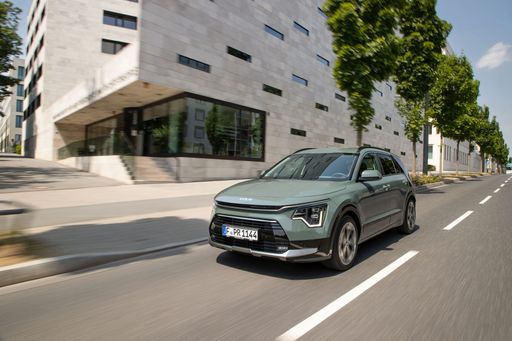 @ Kia Corporation
@ Kia Corporation
Kia Niro
Kia Niro
The Kia Niro blends clever packaging and modern styling into a compact crossover that’s refreshingly sensible for daily life. It’s comfortable, economical and packed with user‑friendly tech, so if you want a fuss‑free family car with a touch of green credibility, the Niro is worth a test drive.
details @ Kia Corporation
@ Kia Corporation
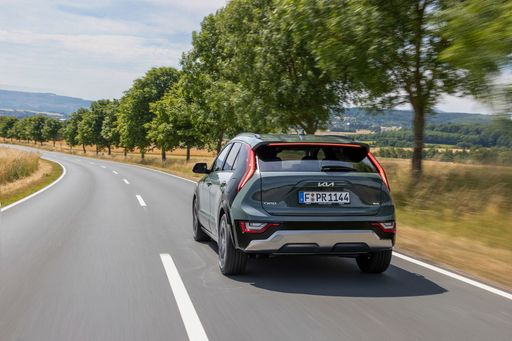 @ Kia Corporation
@ Kia Corporation
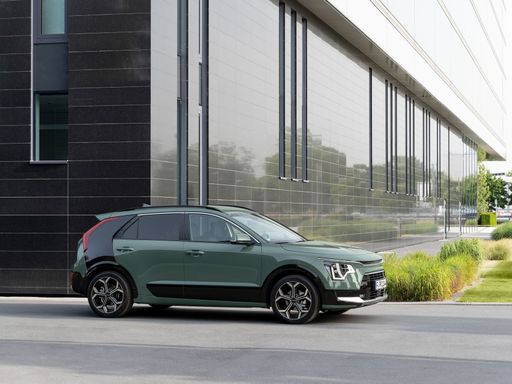 @ Kia Corporation
@ Kia Corporation
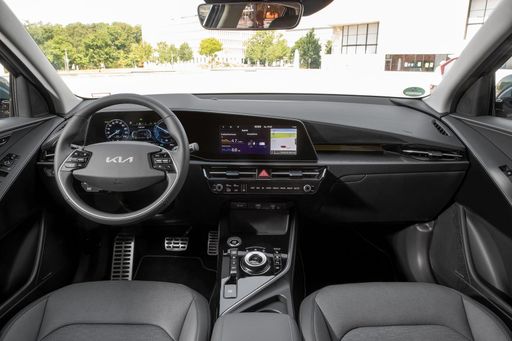 @ Kia Corporation
@ Kia Corporation
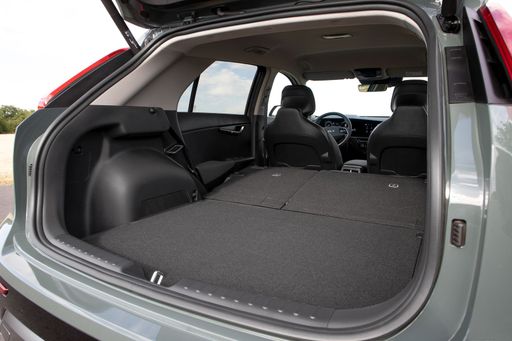 @ Kia Corporation
@ Kia Corporation
Suzuki Vitara
The Vitara is a city-smart SUV with a cheeky streak of off-road promise, perfect for drivers who want practicality without pretense. It’s honest, easy to live with and surprisingly likeable, a sensible companion for everyday adventures and weekend escapes.
details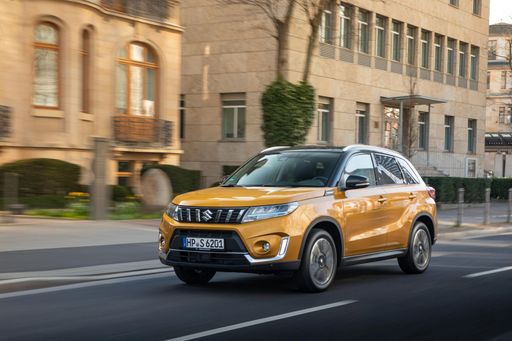 @ Suzuki Motor Corporation
@ Suzuki Motor Corporation
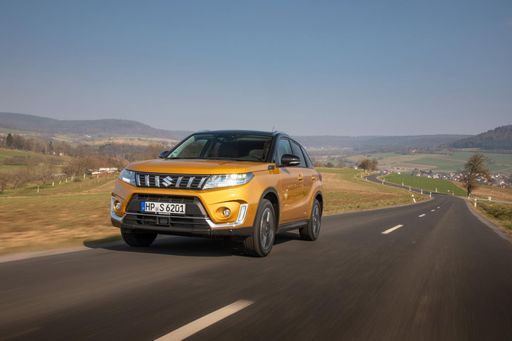 @ Suzuki Motor Corporation
@ Suzuki Motor Corporation
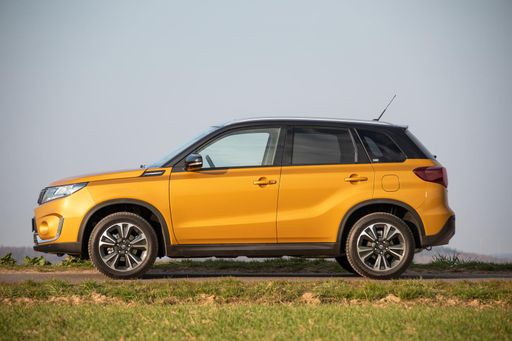 @ Suzuki Motor Corporation
@ Suzuki Motor Corporation
 @ Suzuki Motor Corporation
@ Suzuki Motor Corporation
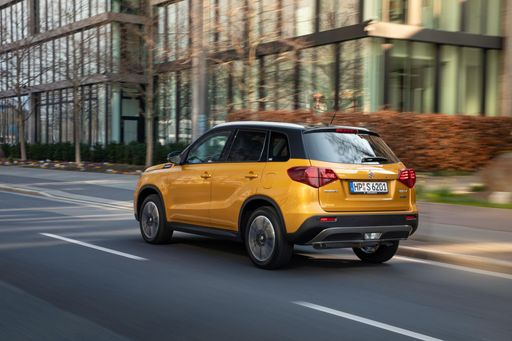 @ Suzuki Motor Corporation
@ Suzuki Motor Corporation
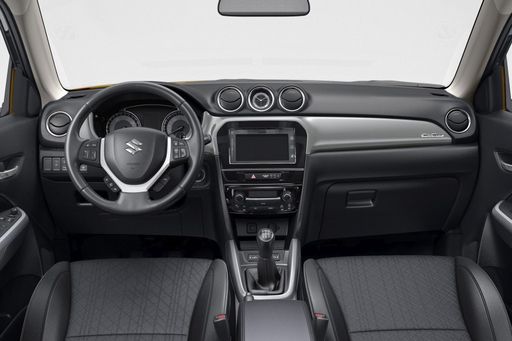 @ Suzuki Motor Corporation
@ Suzuki Motor Corporation
 @ Kia Corporation
@ Kia Corporation
|
 @ Suzuki Motor Corporation
@ Suzuki Motor Corporation
|
|
|
|
Costs and Consumption |
|
|---|---|
|
Price
29100 - 38600 £
|
Price
23600 - 30900 £
|
|
Consumption L/100km
2.4 - 4.9 L
|
Consumption L/100km
5 - 5.9 L
|
|
Consumption kWh/100km
-
|
Consumption kWh/100km
-
|
|
Electric Range
57 - 62 km
|
Electric Range
-
|
|
Battery Capacity
1.3 - 11.1 kWh
|
Battery Capacity
-
|
|
co2
53 - 111 g/km
|
co2
113 - 138 g/km
|
|
Fuel tank capacity
37 - 42 L
|
Fuel tank capacity
47 L
|
Dimensions and Body |
|
|---|---|
|
Body Type
SUV
|
Body Type
SUV
|
|
Seats
5
|
Seats
5
|
|
Doors
5
|
Doors
5
|
|
Curb weight
1474 - 1594 kg
|
Curb weight
1255 - 1395 kg
|
|
Trunk capacity
348 - 451 L
|
Trunk capacity
289 - 375 L
|
|
Length
4420 mm
|
Length
4185 mm
|
|
Width
1825 mm
|
Width
1775 mm
|
|
Height
1545 mm
|
Height
1595 mm
|
|
Max trunk capacity
1342 - 1445 L
|
Max trunk capacity
1046 - 1120 L
|
|
Payload
466 kg
|
Payload
375 - 400 kg
|
Engine and Performance |
|
|---|---|
|
Engine Type
Full Hybrid, Plugin Hybrid
|
Engine Type
Petrol MHEV, Full Hybrid
|
|
Transmission
Automatic
|
Transmission
Manuel, Automatic
|
|
Transmission Detail
Dual-Clutch Automatic
|
Transmission Detail
Manual Gearbox, Automated Manual, Automatic Gearbox
|
|
Drive Type
Front-Wheel Drive
|
Drive Type
Front-Wheel Drive, All-Wheel Drive
|
|
Power HP
138 - 180 HP
|
Power HP
110 - 129 HP
|
|
Acceleration 0-100km/h
9.9 - 11.4 s
|
Acceleration 0-100km/h
9.5 - 12.7 s
|
|
Max Speed
170 - 185 km/h
|
Max Speed
180 - 190 km/h
|
|
Torque
265 Nm
|
Torque
235 Nm
|
|
Number of Cylinders
4
|
Number of Cylinders
4
|
|
Power kW
102 - 132 kW
|
Power kW
81 - 95 kW
|
|
Engine capacity
1580 cm3
|
Engine capacity
1373 - 1462 cm3
|
General |
|
|---|---|
|
Model Year
2025
|
Model Year
2024 - 2025
|
|
CO2 Efficiency Class
C, B
|
CO2 Efficiency Class
D, C, E
|
|
Brand
Kia
|
Brand
Suzuki
|
Is the Kia Niro offered with different drivetrains?
The Kia Niro is available as Front-Wheel Drive.
The prices and data displayed are estimates based on German list prices and may vary by country. This information is not legally binding.
